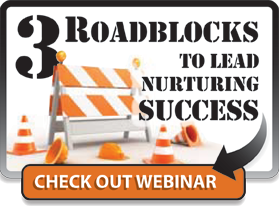Do you have a high bounce rate on your landing pages? Identifying the conversion blocks on your website will allow you to increase the percentage of visitors who experience that all-important “aha moment†that will lead them to convert.
In this session, Kim Albee and Margaret Johnson show you how to create landing pages that will cause your audience to take action, and in turn, become a lead. They also walk you through a few ways to make sure your leads convert, and touch on how to lower the friction to get better results.
Understanding the big picture.
You get traffic coming in to your website. Maybe they land on your home page, but it could be a blog page, or it could be an actual landing page with a lead capture form on it. Either they look around and they leave (bounce), or your visitors find what they need and they convert, either into a lead or to a customer, by taking the action you want them to take.
How do you get visitors to identify themselves?
There is a discipline for this; it’s called conversion rate optimization or CRO. You want to pay attention to this, it is often associated with lead generation or acquiring new registrations, downloads, and customers. It also helps you defend against the limited attention span of visitors and give them what they want before they get tired of looking for it.
It’s not just about more conversions.
Getting more conversions is great, but at the end of the day you want people to purchase your product or service. So, it’s about getting more of your PERFECT customer. Getting to know and understand who your target customer is – this is the key to success.
Why aren’t more visitors converting?
This is the million-dollar question. The entire goal of optimizing your page is to figure out why your visitors aren’t converting and fixing it. True CRO (conversion rate optimization) is based on analytics and data, not on hunches and guesses. This means it’s not about a pile of best practices – it’s about testing for yourselves, on your audience, and learning what works best for YOUR target customer.
If you could have optimized pages, what would that provide for you?
First of all, it capitalizes on traffic you’re already getting – maximizing your traffic. Secondly, paid advertising isn’t getting any cheaper and you want to maximize your spend. You want to make sure that you’re getting the most conversions for the dollars that you’re spending. Third but not least, if you’ve got great conversion when people land on your site, they’re opting in for things and they’re getting what THEY need. This allows you to not only have more trust and more regard and better a relationship with your leads, it lowers your customer acquisition cost.
What are the factors that influence conversion?
Does your site appeal to your users enough that the aggravation they may experience is minimized, what you want them to do clear and easy, and their concerns about taking action are very low? To understand this question you MUST understand your perfect customer very well. You have to look at the site through their eyes, not your eyes.
Develop a plan of attack.
Don’t just start applying tactics, start figuring out what do the numbers mean before you start applying fixes. Challenge yourself to form a hypothesis based on your testing and analytics. Now you can take the knowledge and insights and funnel it right back into new hypotheses and tests. Keep it going and continue this over time – you will have a consistently improving site AND you’ll learn a LOT about your audience as well.







